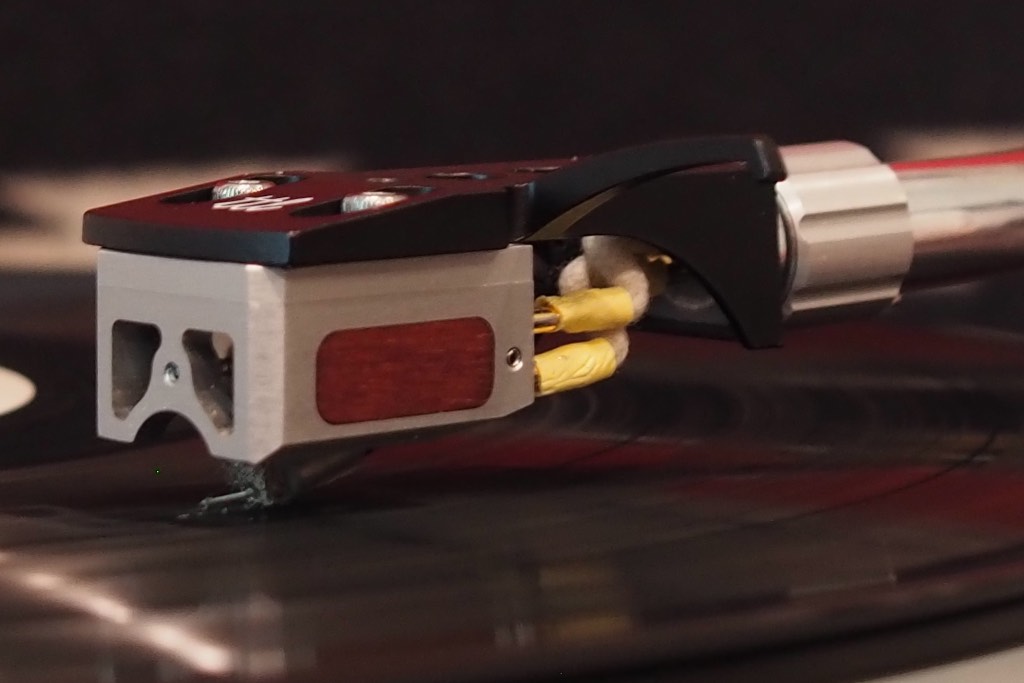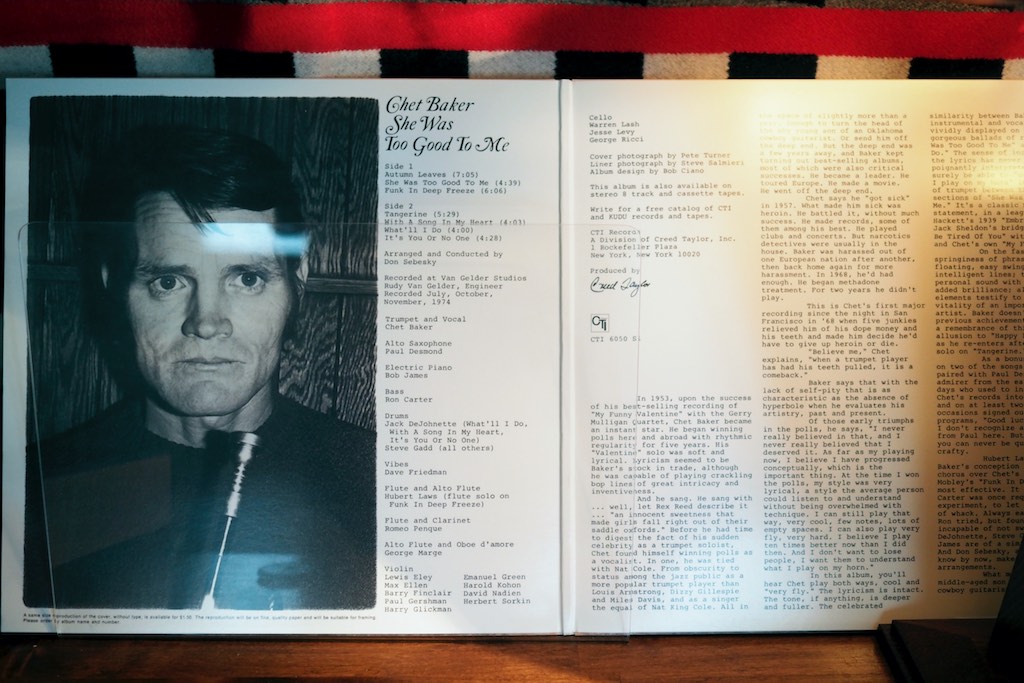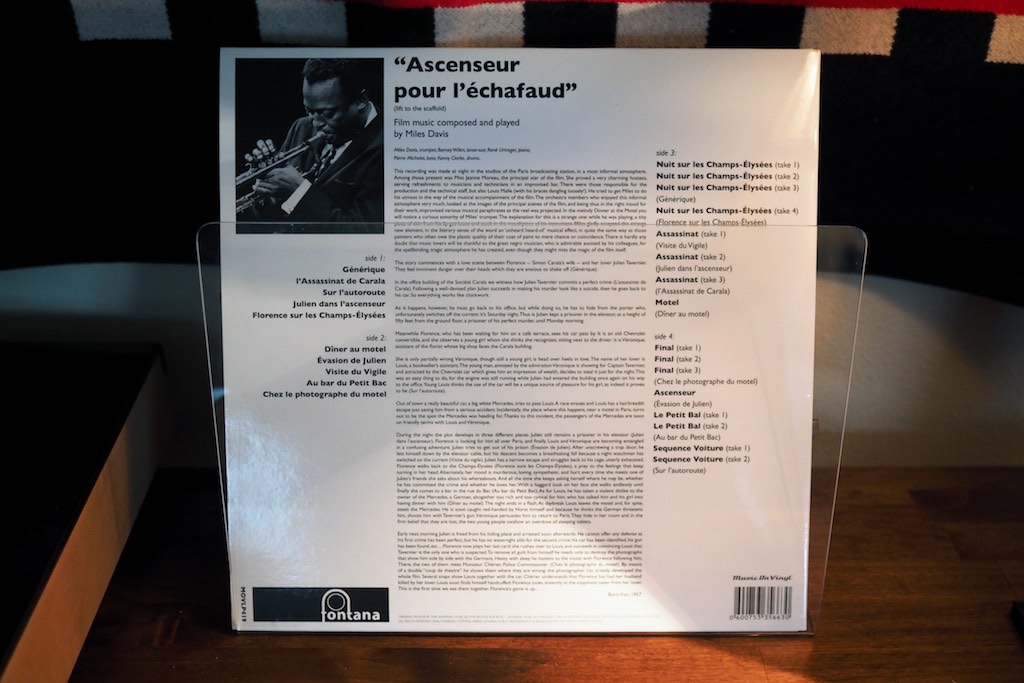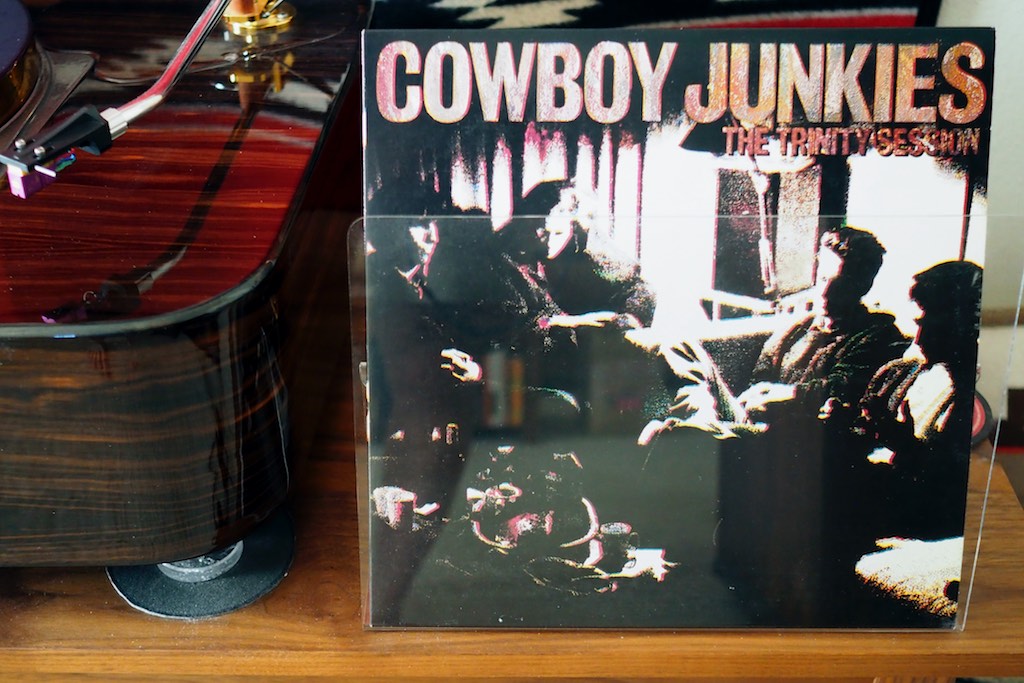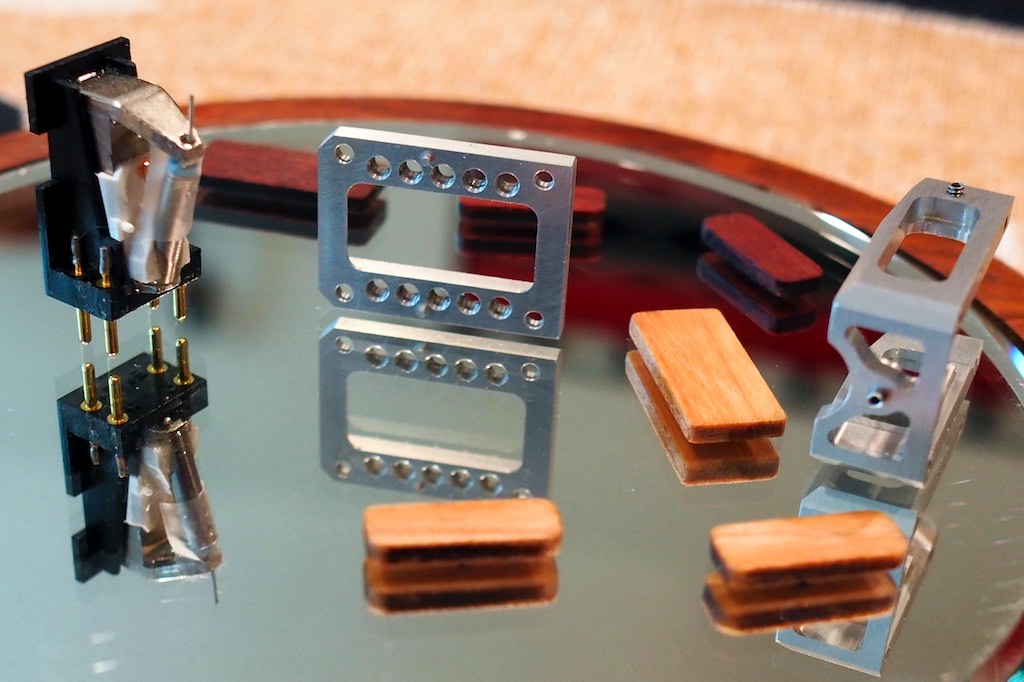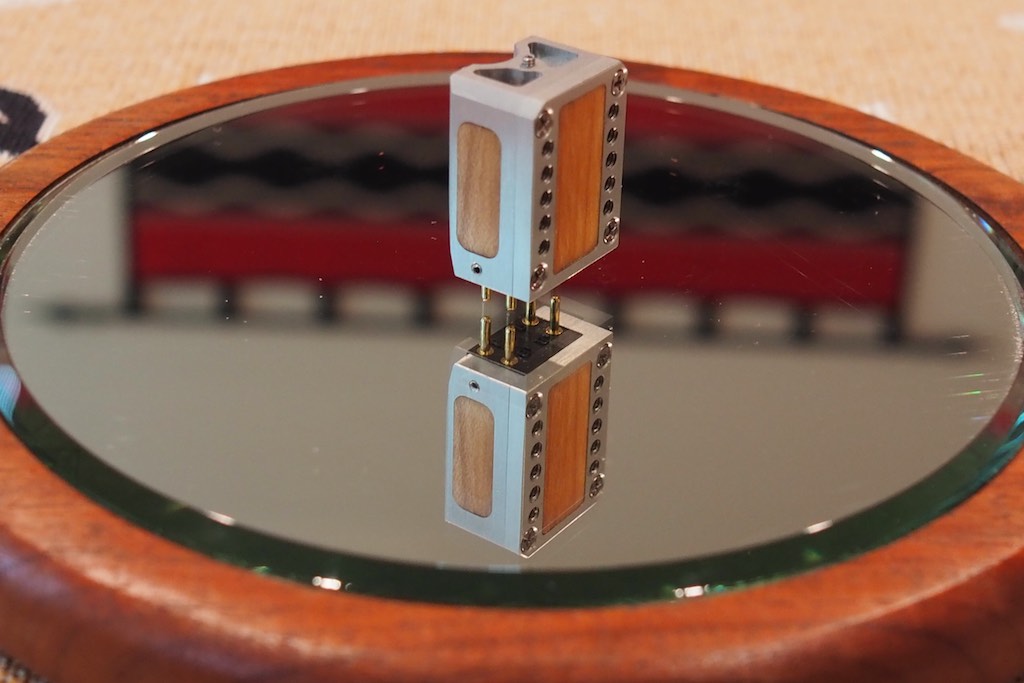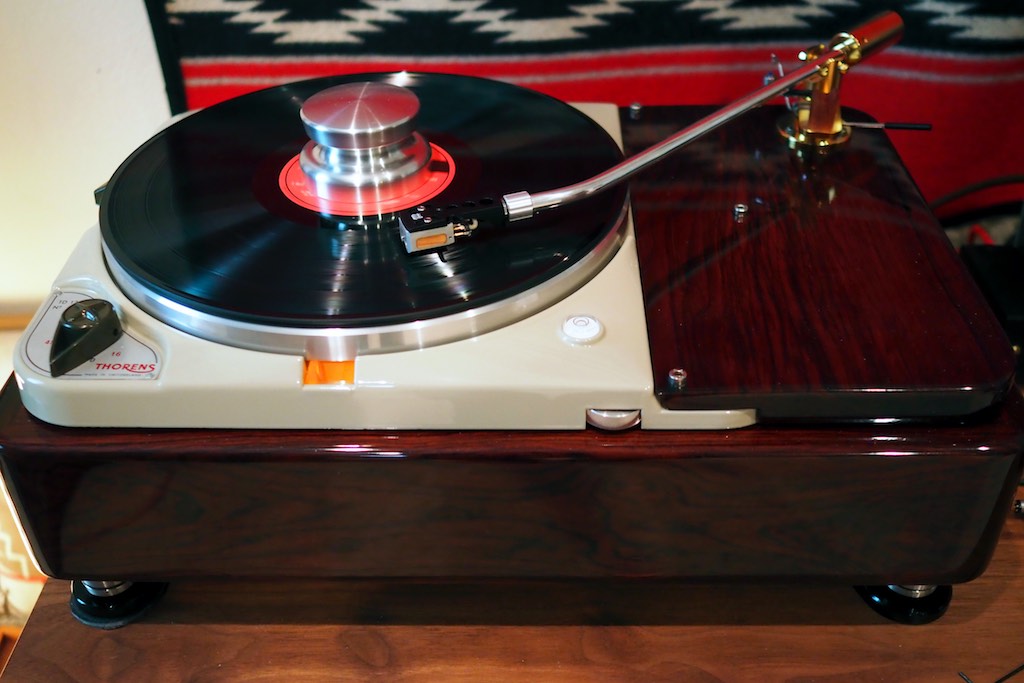In my “sixth tune” report on the Audio MusiKraft Denon DL-103 phonograph cartridge I reported to you my adventure with the oil treated Jatoba tonewood inserts (above).
I've mentioned before what a dramatic difference a complementary set of headshell leads makes to the overall voicing and performance of a cartridge, which can easily be as great in magnitude as with speaker cables, interconnects, or power cables with other components in a system.
While my favorite choice of headshell leads varies somewhat from cartridge to cartridge, for the Audio MusiKraft Denon DL-103 phonograph cartridge I have found headshell leads made from the 22-gauge Art of Tone Gavitt tinned-copper solid-core vintage-style cloth-covered pushback wire - terminated with Audiosilente headshell clips - to be very synergistic (above), providing a very enticing balance of musicality and sonics in my system.
However, repeatedly removing the Audio MusiKraft Denon DL-103 phonograph cartridge from the Art of Tone headshell leads while trying the different tonewood inserts has inflicted quite a bit of wear & tear on the headshell leads, with the shrink-fitted ends getting a little loose and the fabric starting to fray at the ends of the leads.
Then a clip on one of the leads broke off and I had to repair it, which lead to a small but significant discovery.
In order to repair the broken headshell lead I had to take the shrink-fit tubing off the broken end so I could re-solder it, but in a moment of whimsy I decided to take the shrink-fit tubing off the ends of all the leads.
With no shrink-fit tubing on the ends of the leads, the frayed ends of their cloth covering were a bit unsightly and awkward to work with, so I used some beeswax on the frayed ends to help smooth them down a bit so the threads weren't sticking out quite as willy-nilly.
While not as neat & tidy as using shrink-fit tubing, removing the shrink-fit tubing and using the beeswax to smooth out the frayed cloth ends a bit ended up providing a small but meaningful tonal improvement to the headshell leads.
The leads look a little ratty that way, but the slight upper mid-range acoustic roughness & hardness I was hearing while listening to Amarcord Nino Rota (an excellent album that you'll want in your library) completely disappeared after removing the shrink-fit tubing and treating the ends with beeswax.
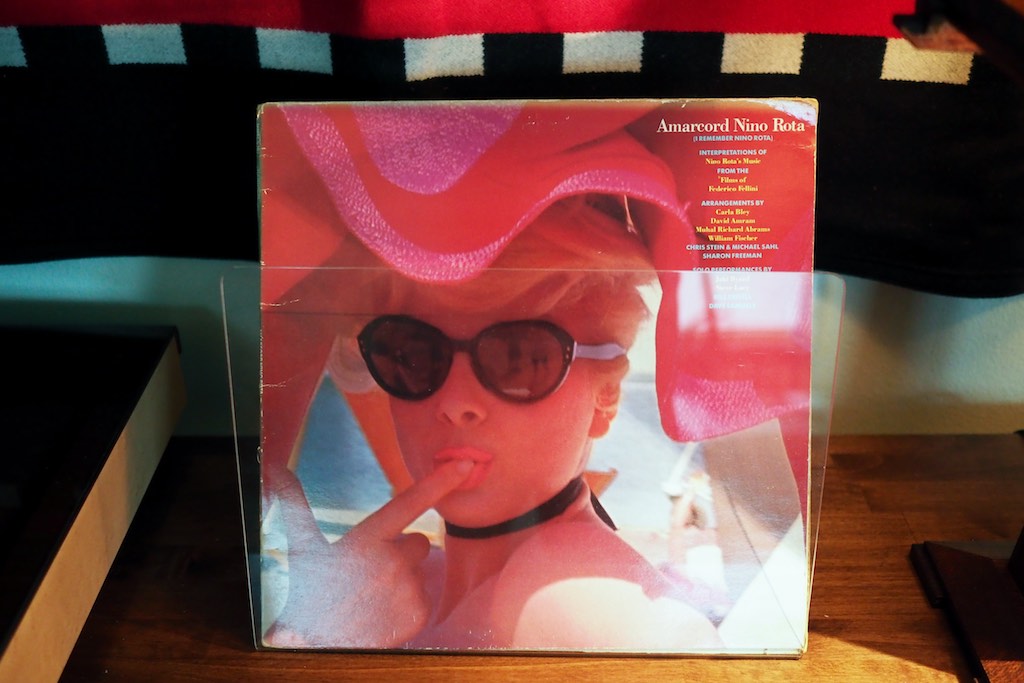
Amarcord Nino Rota (Remember Nino Rota), Interpretations of Nina Rota's Music from the Films of Federico Fellini: Bill Frisell, Sharon Freeman, Deborah Harry, Wynton Marsalis, Carla Bley, and others.
I thought the overall effect of removing the shrink-fit tubing provided a more natural and "real" presentation overall, and with smoother and more evenly balanced high-frequencies.
You would think that 8 little bits of shrink-fit tubing on the ends of the headshell leads would make little difference to overall performance, but it turned out that removing them made for a nice overall improvement, so I thought I'd pass that little tip onto you so you could try it in your own DIY adventures.
Now back to the topic of this post, which is listening to the Audio MusiKraft Denon DL-103 phonograph cartridge with the final set of tonewood inserts that I have on hand, the oil treated maple tonewood inserts.
I used the oil-treatment procedure recommended by Guy to prepare the maple tonewood inserts:
- I spread one pass of the oil onto the front side of each piece of maple tonewood in the set, waited for 1 hour, and then removed the excess oil with a soft cotton polishing cloth.
- I let them sit for 4 hours, and then I spread the oil on all of the sides of the set of maple tonewood inserts so that they were immersed in oil.
- I let the set of oiled maple tonewood inserts sit for one hour, and then removed the excess oil with a cotton cloth. I repeated this step two more times.
- Then I let the oil-treated maple tonewood inserts sit for 24 hours, and then removed the excess oil with a cotton cloth.
I thought I'd listen to a couple more albums before switching out the oil-treated Jatoba tonewood inserts for the oil-treated maple to serve as a baseline of comparison between the two sets of tonewood inserts.
First up was Chet Baker's 1974 She Was Too Good to Me on CTI, which was a "comeback" album of sorts that was recorded by the great Rudy Van Gelder, and as you would expect the recording & production quality is superb.
She Was Too Good To Me features a great lineup of musicians:
- Chet Baker (trumpet & vocals)
- Hubert Laws (flute & alto flute)
- Bob James (piano, keyboard)
- Ron Carter (bass)
- Steve Gadd (drums on "Autumn Leaves", "She Was Too Good to Me", "Funk in Deep Freeze", "Tangerine", and "My Future Just Passed")
- Jack DeJohnette (drums on "With a Song in My Heart", "What'll I Do?", and "It's You or No One")
- Paul Desmond (alto saxophone on "Autumn Leaves", and "Tangerine"),
- Milt Jackson (vibes on "Autumn Leaves")
- Romeo Penque (clarinet)
- George Marge (flute)
- David Friedman (vibes)
With the Audio MusiKraft Denon DL-103 & oiled Jatoba tonewood inserts the overall tone was enchantingly musical, and with so many different instruments it was a nice check for timbral realism, which the Audio MusiKraft Denon DL-103 & oiled Jatoba tonewood inserts rendered beautifully.
The Audio MusiKraft Denon DL-103 & oiled Jatoba tonewood inserts had an enticing natural clarity on She Was Too Good To Me, with an information rich portrayal of meaningful instrumental & vocal nuance about which I could find absolutely nothing to criticize, the presentation was simply superb both musically & sonically.
Tempo, melody, beat, rhythm, and harmony were all convincingly rendered and emotionally engaging, just like I hear in life.
She Was Too Good To Me isn't an album that displays a huge amount of dynamic range, as it's pretty mellow jazz, but there are a lot of subtle dynamics in the melody lines and harmonies, and I found the Audio MusiKraft Denon DL-103 & oiled Jatoba tonewood inserts to be very good at resolving the more subtle end of the dynamic spectrum, which really helps bring the music alive with a sense of the musician's touch upon the notes.
Miles Davis' Ascenseur Pour L'ÉchafaudIt is a fascinating jazz movie soundtrack album of haunting music recorded in November of 1957.
As the story goes, the recording was done with little preparation, with the band improvising to cuts from the film that were projected while they were playing, with little more than a brief explanation of the movie's plot to guide them.
The album features Miles Davis on trumpet, Barney Wilen on tenor saxophone, René Urtreger on piano, Pierre Michelot on bass, and Kenny Clarke on drums.
The Audio MusiKraft Denon DL-103 & oiled Jatoba tonewood inserts wasn't quite as successful with Miles Davis' Ascenseur Pour L'ÉchafaudIt as it was with Chet Baker's She Was Too Good To Me, rendering Miles' muted trumpet a little too shrill for my tastes.
On to the next album, The Cowboy Junkies' The Trinity Session.
The Audio MusiKraft Denon DL-103 & oiled Jatoba tonewood inserts fared better with The Cowboy Junkies' The Trinity Session, delivering the huge sense of velvety sense of recorded acoustic in Toronto's Church of the Holy Trinity the album is known for.
There was a lot to like, but Margo Timmins' vocals were exaggerated a bit in sibilance, which I didn't care for.
Still, overall the Audio MusiKraft Denon DL-103 & oiled Jatoba tonewood inserts acquitted itself quite well on The Trinity Session, with a lot of beautiful musical nuance, and a really nice sense of the flow of tempo and melody.
Ok, with that little refresher it's time to swap out the oiled Jatoba tonewood inserts for the oiled maple inserts, to hear what happens.
I mounted the Audio MusiKraft Denon DL-103 & oiled maple tonewood inserts back on the Schick tonearm and dialed in the tracking force and such, and put back on The Trinity Session for a little listening.
I started my listening with the Audio MusiKraft Denon DL-103 & oiled maple tonewood inserts with the tensioning screws all way out so that they weren't in contact with the pole piece or inner chassis of the Denon DL-103.
The first thing I noticed was that the Jatoba's slight emphasis of Margo's sibilance was almost entirely ameliorated with the oiled-maple tonewood inserts. Almost.
Then I snugged up the front pole piece tuning screw with an eighth turn of tensioning, and the two rear inner chassis tuning screws with a quarter turn of tensioning.
The result was pretty much what I experienced with the other tonewood inserts, with the overall tone improving and becoming more "real" and natural sounding, and in the case of The Trinity Session, Margo's sibilance diminished even further, into what I would consider to be a "natural" range of vocal sibilance.
With the Audio MusiKraft Denon DL-103 & oiled maple tonewood inserts the musicians had more presence in my room, there was a huge sense of wrap-around acoustic presence, an information rich and nuanced presentation of the instruments, beautiful timbral textures, a high-degree of tone color resolution, and expansive depth to the sound stage.
The tempo, melody, beat, rhythm, and harmony were beautifully reproduced, which gave me a really nice sense of emotional involvement with the music.
Miles Davis' Ascenseur Pour L'ÉchafaudIt fared almost as well, with most, but not quite all, of the natural tonality of muted trumpet in evidence, but very close.
Overall, it was much as with The Trinity Session, with the overall tone improving and becoming more "real" and natural sounding, the instruments becoming more present in the room, and a wrap-around sense of acoustic space.
Reproduction of tempo, melody, beat, rhythm, and harmony were again superb, and the Audio MusiKraft Denon DL-103 & oiled maple tonewood inserts really delivered a superb balance of musicality & sonics that I really enjoyed.
I'll leave it there for now, and just say that the Audio MusiKraft Denon DL-103 is a rather remarkable device, and I think its ability for voicing the Denon DL-103 to match system balance and listeners' preferences is bloody brilliant.
I find it rather amazing the level of performance that Guy Pelletier's Audio MusiKraft tunable cartridge shell coaxes out the Denon DL-103, and I think Denon DL-103 enthusiasts will be thrilled with the transformation that occurs, as will music lovers and hifi enthusiasts.
I'll have a lot more to share with in my full review of the Audio MusiKraft Denon DL-103 for Positive Feedback, so stay tuned!
As always, thanks for stopping by, and may the tone be with you!




